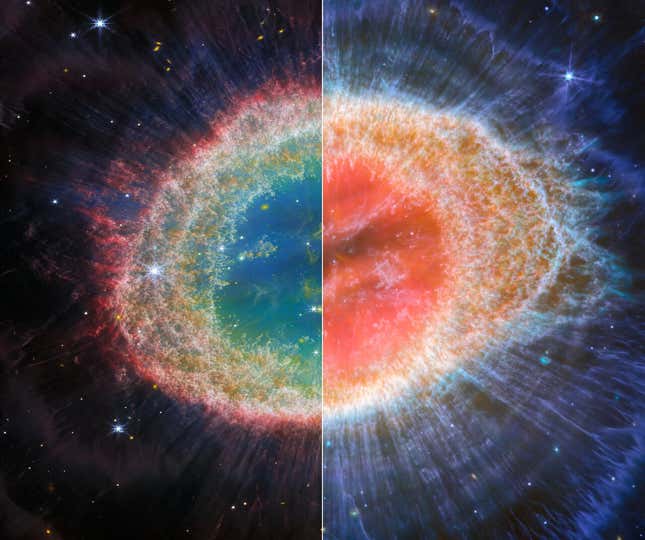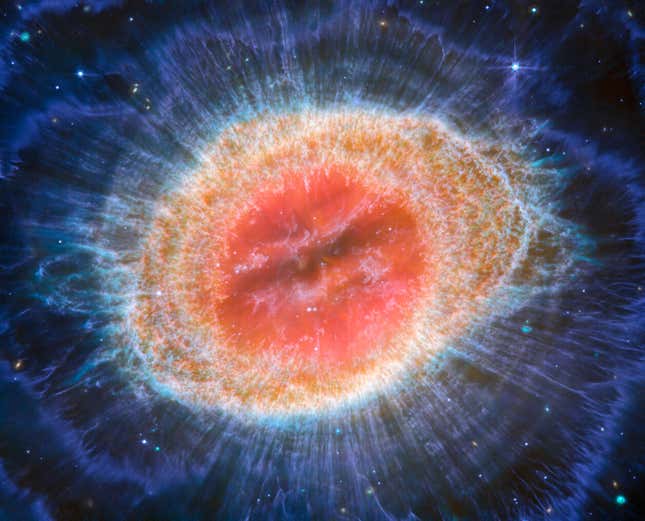The Webb Space Telescope recently imaged the Ring Nebula with its two primary imagers, revealing the gaseous formation in never-before-seen detail.
The breathtaking images show the hydrogen-rich globules in the nebula and its inner region, rife with hot gas. The nebula—first discovered in 1779—was imaged by Webb’s Near-Infrared Camera (NIRCam) and its Mid-Infrared instrument (MIRI), which showcase different aspects of the planetary nebula’s structure and composition.
Advertisement
The new NIRCam image highlights aspects of the inner ring’s filament structure, while the MIRI image details aspects of the nebula’s outer concentric features. Important to note: the recently imaged Ring Nebula (NGC 6720) is not to be confused with the Southern Ring Nebula (NGC 3132), which Webb imaged last year.

Advertisement
Advertisement
According to a European Space Agency release describing the image, the nebula is close to doughnut shaped, with a rugby ball-shaped combination of gas and dust situated in the nebula’s gap (the doughnut hole, to continue the analogy through).
A nebula is a cloud of gas and dust in space. Many nebulae form as stars die, and some nebulae are regions where new stars are born, according to NASA. The Ring Nebula sits about 2,500 light-years from Earth. Its main ring is made up of gas that is being flung outwards by a dying star at the nebula’s core. The star will eventually become a white dwarf. Our own Sun may have a nebula when it finally expires in some five billion years, and it will become a white dwarf, though we’ll almost certainly not be around to see it (never say never)!

Outside of the nebula’s main ring there are about ten concentric arcs, which according to the same release may come from interactions between the main dying star at the nebula’s center and a low-mass companion; by studying the nebula, astronomers can deduce details of the star that gave rise to it.
Advertisement
It may seem bizarre that two different images of the same nebula can have such different colors. But Webb observes objects at infrared wavelengths, meaning our eyes literally cannot handle Webb raw images. The data-rich raw images just appear black before the Webb image processors translate the infrared data into visible light wavelengths—which is what they did with the image in this article, bringing out certain aspects of the nebula in each image.
From some of the deepest views of the universe to studying even the rings of planets in our own solar system, Webb is giving astronomers an entirely new view of space. And we (the public) get to bask in the brilliance of everything the cosmos has to offer, from the most ancient light we can see to Uranus.
Advertisement
More: It’s Time to Finally Get Our Ass to Uranus
Services Marketplace – Listings, Bookings & Reviews